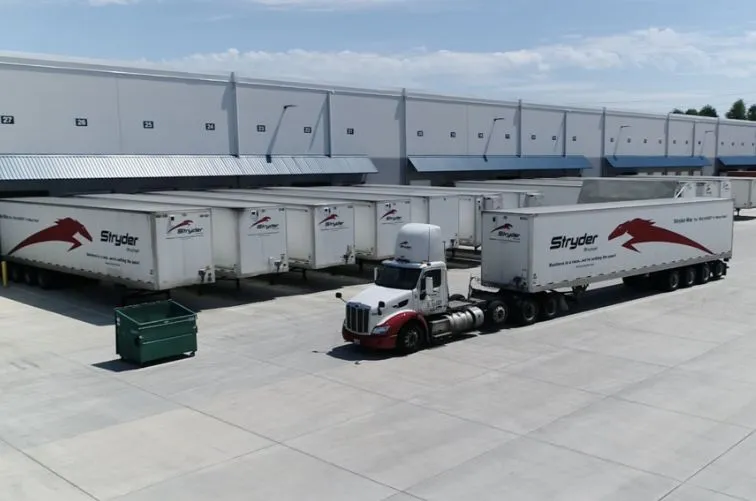Warehousing and distribution services in logistics help businesses manage their inventory and ensure timely delivery throughout the supply chain. From inventory management and distribution channels to value-added services, there are a range of services available to support businesses in optimizing their supply chains.
Businesses can use warehousing and distribution services to improve operational efficiency, reduce transportation costs, and meet customer expectations. Efficient management of these functions can result in smoother operations, enhanced customer loyalty, and a competitive edge in the marketplace.
Being a provider of warehousing and distribution services in Metro Vancouver, let’s go through what warehousing and distribution means, examples of services, and strategies used to manage warehouses and efficiently distribute products.
Warehousing and Distribution Meaning in Logistics
In logistics, warehousing refers to the process of storing goods at various locations to maintain inventory until they are needed for distribution. This involves everything from receiving raw materials, storing them in a secure and organized way, to preparing them for freight transportation. A warehouse can be used for short-term storage or long-term inventory management, depending on the nature of the goods and market demand.
Distribution, on the other hand, focuses on getting goods from the warehouse to the final destination, whether it’s a retail store, distribution center, or directly to customers. The distribution process involves order picking, packing, labeling, and shipment, typically coordinated via a distribution channel that ensures efficient and timely delivery. A well-managed distribution system helps businesses minimize stock levels and reduce the impact of market fluctuations.
Together, warehousing and distribution services support an efficient supply chain management system. These processes ensure that goods are readily available when needed, preventing stockouts and improving overall operational efficiency.
3 Examples of Warehousing and Distribution Services:
Example 1: Cross-Docking
Cross-docking is an advanced distribution service where products are directly transferred from one truck to another with minimal or no storage in between. This process is particularly beneficial for time-sensitive products or goods that do not require long-term storage. It helps reduce handling time, eliminate storage costs, and improve delivery times, making it a key feature of distribution networks for companies with high turnover rates.
Example 2: High-Capacity Storage Space and Distribution Infrastructure
Modern warehouses are engineered to store large volumes of goods while optimizing distribution efficiency. Equipped with dedicated warehouse management systems which includes real-time inventory tracking, and facilities in strategic locations near transport hubs or key highways, warehousing enables swift distribution of products throughout the supply chain’s distribution centers.
Warehousing infrastructure supports business scalability, reduces transport times, and integrates seamlessly with supply chain networks, ensuring vendors can adapt to demand fluctuations and maintain fast, cost-effective delivery.
Example 3: Value-Added Distribution Services
Some warehousing providers offer value-added services such as labeling, packaging, assembly, or customization of products before they are shipped. These services allow businesses to optimize their logistics operations by outsourcing additional tasks that would otherwise require in-house resources. For example, a company may use warehousing services to repackage products before distribution, saving time and reducing labor costs.
3 Warehousing and Distribution Management & Strategies
Managing warehousing and distribution efficiently is crucial for maintaining cost control, improving delivery speed, and enhancing the customer experience. Inventory management plays a pivotal role in this process, ensuring that stock levels are optimized and supply chain operations run smoothly. The key to efficient warehousing and distribution is integrating advanced software tools and systems that help businesses automate processes, track stock in real-time, and forecast customer demand.
Strategy 1: Choose a Strategic Warehouse Location
Choosing the right warehouse location is critical to reducing transportation costs and improving delivery times. Warehouses near transportation hubs or key markets streamline distribution routes, ensuring faster and cheaper deliveries. Cross-docking further cuts storage time and reduces costs by moving products directly from inbound to outbound transport.
Strategy 2: Utilize Inventory Control Systems
Advanced warehouse management systems (WMS) enable real-time inventory tracking, preventing overstocking or stockouts. By using real-time tracking, 3PL providers can efficiently manage stock across multiple locations, optimize storage space, and ensure products are always available when needed. This enhances supply chain efficiency and improves decision-making for businesses.
Strategy 3: 3PL Providers: Flexible Freight Forwarding and Distribution Solutions
Third-party logistics (3PL) providers offer a wide range of freight forwarding and distribution services, delivering flexible solutions that help businesses scale efficiently and overcome logistical bottlenecks. This includes transporting freight by truck, train, ocean, or even air. These flexible options not only reduce costs but also enhance delivery accuracy, ensuring businesses can expand their operations without being hindered by logistical challenges.
Whether scaling up or entering new markets, 3PLs provide the infrastructure and expertise to keep supply chains running smoothly. By partnering with a 3PL provider, companies can optimize their supply chains and adapt to changing market demands.
Effective warehousing and distribution are key to optimizing supply chain operations, cutting costs, and improving delivery efficiency. For businesses seeking a 3PL partner, the right management strategies ensure smooth operations from storage to delivery.
Warehousing, Storage, and Distribution Services in Vancouver: Stryder Canada
Stryder Canada provides warehousing and distribution services in Metro Vancouver and Calgary. Thanks to our strategic locations near major transportation routes and ports, we provide businesses with seamless access to both domestic and international distribution channels throughout the Pacific Northwest, from Canada to the USA.
We provide a complete suite of warehousing and distribution services, including high-capacity warehousing space and dedicated infrastructure for the storage and distribution of beverage products, as well as cross-docking for faster turnaround times and 3PL freight forwarding services to support the distribution process. Our focus on cost-effective, efficient solutions enables local businesses to streamline their supply chain processes while meeting the growing demand for faster, more reliable deliveries.
At Stryder, we’re committed to helping our clients grow and thrive in an increasingly competitive market.
Contact us today at 833-787-9337 or sales@go-stryder.com for more information or to book a site visit!


Recent Comments